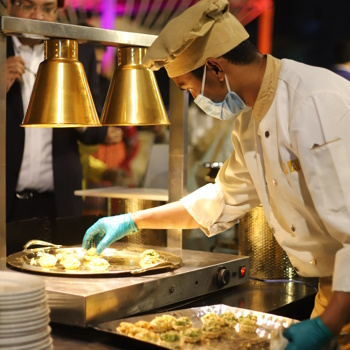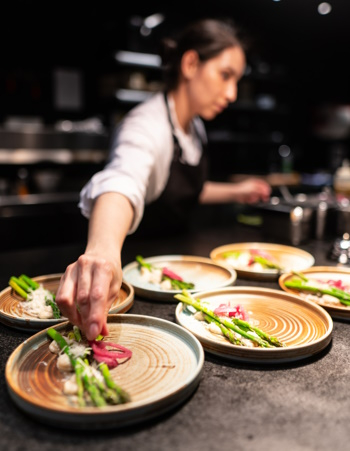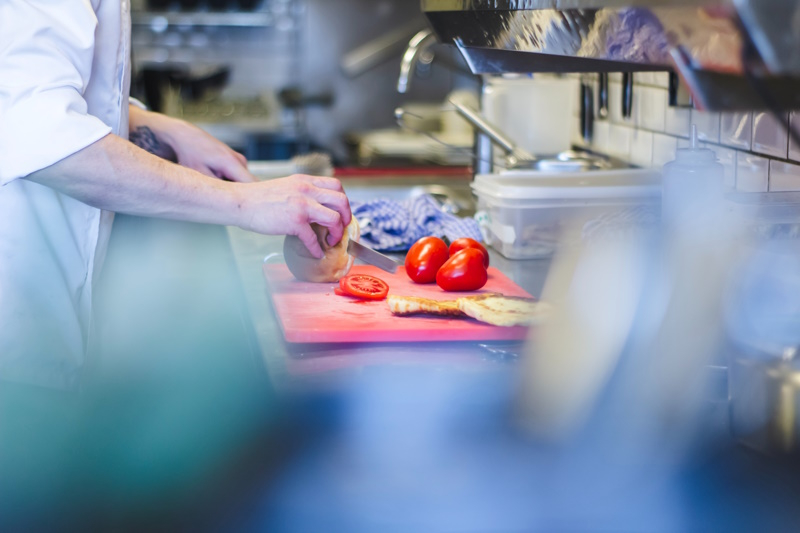In our March/April 2023 issue of Meetings, we published an article on the problem of food waste at events. It unpacks why food waste is a problem and shares some insights into how to deal with it. However, there are many neat tips and tricks to reducing food waste, which is what today’s article is about.
Without further ado, here they are:
#1. Find suppliers and partners who are invested in reducing food waste, and who can provide pro-active solutions for your event.
#2. Buy fresh, seasonal ingredients that are locally produced. This reduces the carbon footprint of storing and transporting food, which also reduces opportunities for food to spoil.

#3. Design your event menu around what ingredients you can source locally at that time, rather than designing a menu first and then seeking the ingredients. This is also a great way to share the flavours and even traditional dishes of a destination, which attendees who have travelled to the destination often appreciate.
Design your event menu around what ingredients you can source locally at that time, rather than designing a menu first and then seeking the ingredients.
#4. Ann Lamont, the Two Oceans Aquarium Foundation Executive Chairperson, recommends sourcing ingredients from small and regenerative farms for their environmental benefits. Because of their smaller scale, these kinds of farms tend to be able to better minimise waste. As a bonus, their ingredients are likely to come plastic-packaging free.
#5. Most venues and catering companies take care to only order what they need, to prevent food waste (and therefore also the attached financial waste). If planning a plated event, event planners can help the venue or catering company to be even more precise with their orders, by asking event attendees to select their menu option beforehand and ensuring all special dietary requirements are accounted for. Naturally extra dishes will be needed for ‘in case’, but the margins for error can be reduced.
Event planners can help the venue or catering company to be even more precise with their orders, by asking event attendees to select their menu option beforehand.
#6. Always factor in a no-shows for your event. This is easier for repeat events, where you can track and average the number of no-shows, but for a new event you can work off industry averages. Communicate and discuss this with your F&B partner.
#7. You can also consider a no-show penalty policy to discourage no-shows. This is especially useful for ‘free’ events, where drop-out rates tend to be higher than for at paid-for events.

#8. Menu design plays an important role in preventing food waste and is a space where chefs can find innovative ways to use the whole vegetable (yes, even the peels and leafy tops) and the whole animal. Historically these were never wasted, but in modern times we have developed narrower ideas about what is nice to eat. Start with small changes, introducing the ‘new’ foods alongside the regular popular ones, making sure they look and taste great. Don’t forget to communicate clearly with your delegates about what you are doing and why, to gain their interest, support and feedback.
Menu design plays an important role in preventing food waste.
#9. Share information about your attendees with the chef, so they can also cater to their taste preferences. If you’re unsure what your attendees like – ask them! This could even form part of the online RSVP.
#10. When designing the menu, it is also important to keep an eye on the possibility of re-use or donation of the leftovers in terms of packaging. It is important to consider and aim for those food types which are easy to re-package. For example, when the food is served in small cups it is very difficult to re-package for later consumption, notes Refresh*.
#11. If you are interested in donating excess food to feeding programmes, contact a reputable organisation that does this to help guide you on how you will need to keep and store the food to ensure it meets the necessary health and safety standards. Examples of organisations you can contact include Chefs with Compassion, Nosh Food Rescue and SA Harvest.

#12. While it’s good to have options for guests, make sure the menu isn’t too extensive. More choices lead to more opportunities for waste.
#13. For buffets, try to have more vegetarian dishes which everyone can eat (whereas vegetarians cannot eat meat).
#14. Bear in mind that plated meals are typically less wasteful than buffets.
#15. Refresh* suggests you can also offer a smaller and larger portion option for plated meals, to better match attendee appetites. The same applies for drinks.
#16. For buffets, you will want to put a minimal amount of food out, to prevent waste. Refresh* recommends you use smaller and shallower serving dishes with smaller serving utensils, and replenish these quickly, as needed. You can also use vertical dishes to fill up the space with less food, and present items such as pastries on trays rather than stacked in bowls for the same reason.
#17. Have more serving dishes out at the start of a buffet, and reduce these as the meal progresses.
#18. Keep different ingredients separate, where possible, such as types of fruit served separately rather than mixed into a fruit salad. This makes it easier for people to avoid foods they don’t like, and also to repurpose the items afterwards.

#19. Avoid pre-packed and individually wrapped portions as these typically lead to more food waste (and tend to use single-use plastic packaging).
#20. You can also offer guests smaller plates, or plates with a large rim, to subtly encourage them to take smaller portions (with the option to replenish as needed).
#21. Replace self-service buffets with staff service, as once food is dished by a consumer it cannot be donated. This can also be a good strategy to prevent attendees from dishing up excessive amounts of food.
#22. Cook-to-order stations can better manage overproduction and better control portion sizes, and are a particularly good idea for high-cost items.
Cook-to-order stations can better manage overproduction and better control portion sizes.
#23. Not all leftover food has to be thrown away. Some leftovers can be donated to feeding schemes (depending on the food and how it has been handled). Some unserved items can be repurposed – such as using fruit to make preserves, stale bread to make breadcrumbs, and bones and vegetable peels to make a tasty stock. And the rest can be composted. (See the next point.)
#24. Implement a composting system in the kitchen. Some systems – such as Bokashi – can handle cooked food, bones, dairy, citrus and onion, which means there is no need to try and separate these from other food scraps, and even plated leftovers can be added to the compost.
#25. Consider the design and flow of the kitchen, so that staff can easily access the composting bins from all food prep areas. The easier it is to use, the better it will be used.

#26. If you have composting bins front of house at an event, for the attendees to use, consider serving food in compostable containers so that everything can be thrown away together. To ensure this works well, you should also strive to remove any plastics and non-compostable items, such as cutlery and bowls, from this space.
#27. Record what is or isn’t eaten, as well as the volumes of waste from your event. This will help inform future planning.
Record what is or isn’t eaten.
#28. Communicate with all stakeholders about your food waste goals pre-event and share post-event feedback with them too. Not only does this help to spread the message on the importance of tackling food waste and to promote your efforts in this regard, it will also help build a good foundation for minimizing food waste at future events you host.
* This information was taken from Refresh’s ‘Event Catering Food Waste Reduction Guideline’ which you can download in full for free here.




